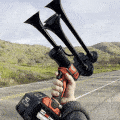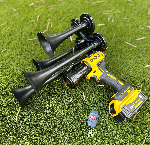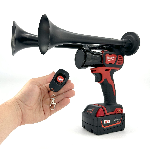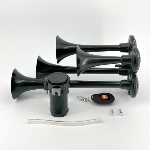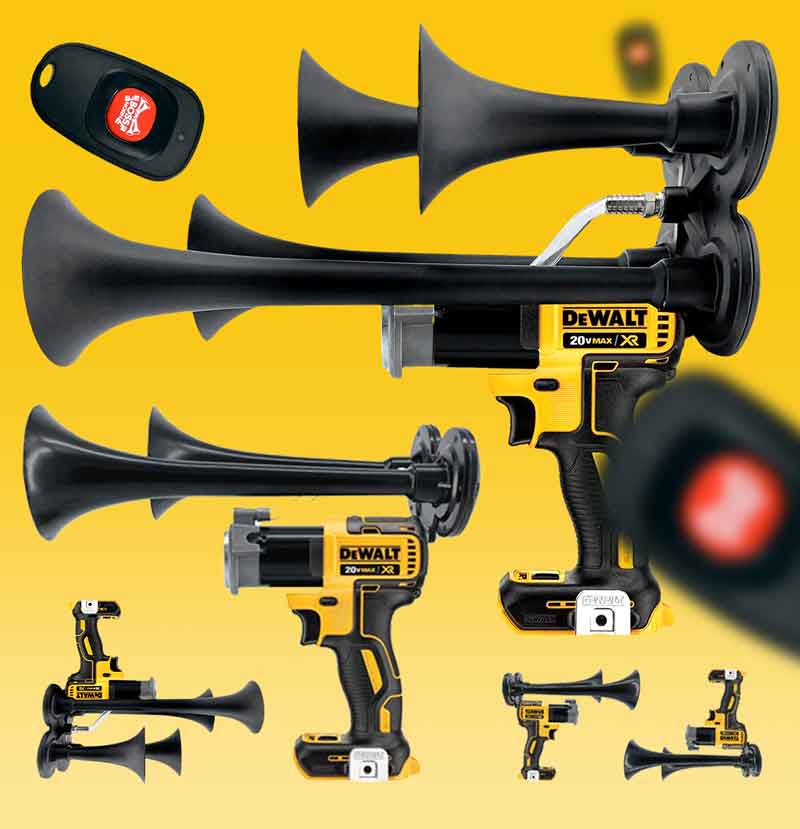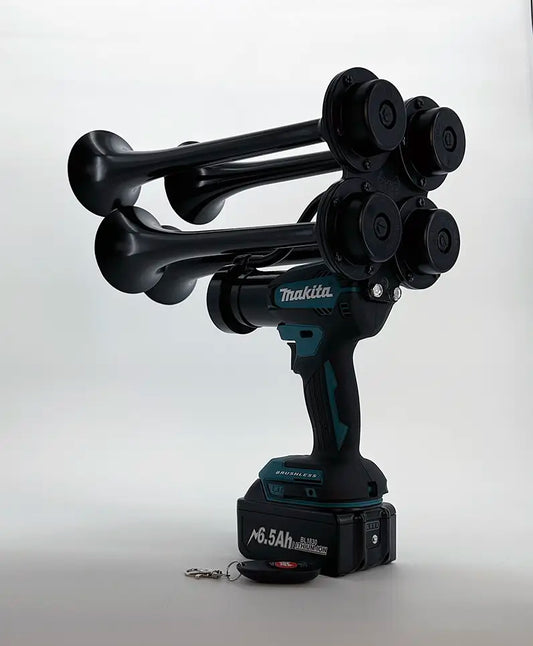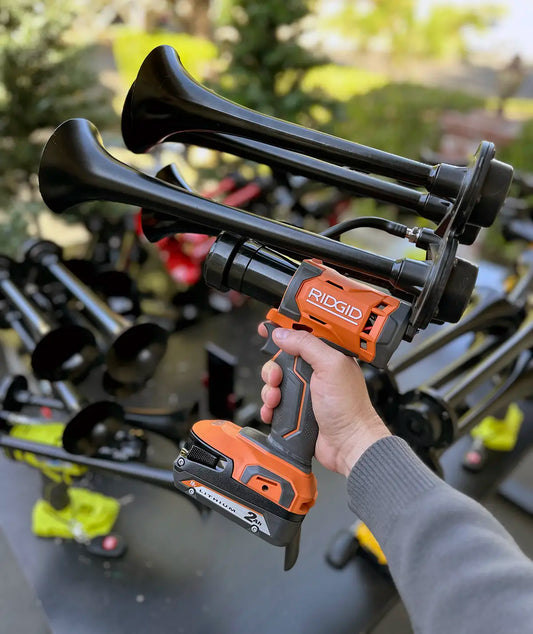Did you know that foghorns, also known as marine horns, are used to warn ships of obstacles, navigate through poor visibility conditions, and communicate between vessels? These devices have been a crucial part of maritime safety for centuries, ensuring the safe passage of ships in foggy or misty weather. The sound of a foghorn can travel for miles over water, alerting vessels to potential dangers and guiding them to their destination safely.
The history of foghorns dates back to the early 19th century when steam-powered horns were first developed for use in lighthouses and on ships. Over the years, advancements in technology have led to the development of more modern and efficient foghorn systems, including electrically powered horns and compressed air sirens. Today, foghorns are still an essential tool for maritime navigation, especially in areas with heavy fog or poor visibility.
In recent years, there has been a push to make foghorns more eco-friendly and energy-efficient. Many modern foghorn systems now use solar power or battery-operated mechanisms to reduce their environmental impact. These sustainable solutions not only help protect the marine environment but also save on energy costs for ships and lighthouses using foghorn systems.
While the technology behind foghorns has evolved over time, their primary function remains the same: to provide audible signals to vessels navigating through foggy conditions. Whether used on ships, lighthouses, or other maritime structures, foghorns play a critical role in ensuring the safety of seafarers and guiding them through challenging weather conditions. As advancements continue to be made in foghorn technology, the future looks bright for these essential tools of maritime safety.
How can you create a foghorn at home?
Learn about the materials and steps required to build your own foghorn for safety or recreational purposes, as well as how to properly use it. Understand the science behind foghorns and their importance in navigation systems. Discover the different types of foghorns and how they have evolved over time to suit various needs. Stay tuned for a comprehensive guide on how to make a foghorn and enhance your maritime knowledge.
Gather Materials
To make a foghorn, you will need a few key materials. These include a metal or PVC pipe, a whistle or horn, a rubber bulb or other device for creating compressed air, and some strong adhesive such as epoxy or super glue to secure everything together.
Assemble the Components
Start by attaching the whistle or horn to one end of the pipe. Make sure it is securely fastened to prevent air from escaping. Next, connect the rubber bulb or air compression device to the other end of the pipe. This will be used to create the sound when squeezed.
Test the Foghorn
Once everything is assembled, give your foghorn a test run. Squeeze the rubber bulb to force air through the pipe and out of the whistle or horn. You should hear a loud, low-frequency sound resembling a traditional foghorn. Adjust the components as needed to achieve the desired sound.
Use and Maintain Your Foghorn
Now that your foghorn is complete, you can use it as needed in foggy conditions or for signaling purposes. Make sure to store it in a safe place when not in use and regularly check for any wear and tear that may require maintenance.
Statistics:
- According to the National Weather Service, fog is responsible for over 20,000 traffic accidents each year in the United States.
- Fog horns are still used on some ships and in coastal areas to alert vessels of potential hazards during low visibility conditions.
- The first foghorn was invented in the early 19th century by Robert Foulis, a Scottish engineer.
- In modern times, electronic foghorns have largely replaced traditional mechanical foghorns due to advances in technology.
https://youtube.com/watch?v=Eu6EeHbbilU
**FAQ: How to Make a Foghorn**
**What materials do I need to create a foghorn?**
To create a foghorn, you will need to gather a few essential materials. These materials include a source of compressed air, a resonating chamber, and a mechanism for producing a loud noise.
- Source of compressed air
- Resonating chamber
- Mechanism for producing a loud noise
**How can I assemble the components to make a foghorn?**
Assembling the components of a foghorn requires a strategic approach. Begin by connecting the source of compressed air to the resonating chamber, ensuring a tight seal to prevent air leakage. Next, secure the mechanism for producing a loud noise in place within the resonating chamber. Finally, test the foghorn to ensure that all components are functioning properly.
- Connect source of compressed air to resonating chamber
- Secure mechanism for producing loud noise within the chamber
- Test the foghorn for proper functionality
**What safety precautions should I consider when making a foghorn?**
When making a foghorn, it is important to prioritize safety. Be sure to wear appropriate protective gear, such as safety goggles and gloves, to prevent injury during the construction process. Additionally, work in a well-ventilated area to avoid inhaling any harmful fumes from the materials being used. Finally, follow all instructions carefully and exercise caution when handling tools and equipment.
- Wear appropriate protective gear
- Work in a well-ventilated area
- Follow instructions carefully and exercise caution
**How loud should a foghorn be when it is operational?**
The loudness of a foghorn is a crucial factor in its effectiveness. When operational, a foghorn should produce a sound that is loud enough to reach a considerable distance and be heard over ambient noise. It is recommended to conduct tests to ensure that the foghorn meets the required decibel levels for alerting ships and other vessels in foggy conditions.
- Produce a loud sound that reaches a considerable distance
- Be heard over ambient noise
- Meet required decibel levels for alerting ships
**Can a foghorn be customized to produce different sounds?**
Customizing a foghorn to produce different sounds is possible with the use of various techniques. Experimenting with different materials for the resonating chamber and adjusting the mechanism for producing the noise can result in unique sound variations. Additionally, incorporating electronic components or modifying the airflow can further enhance the customization possibilities of a foghorn.
- Experiment with different materials for resonating chamber
- Adjust mechanism for producing noise
- Incorporate electronic components or modify airflow
Conclusion
In conclusion, making a foghorn can be a simple and fun project that only requires a few materials and basic tools. By following the steps outlined above, you can create your own foghorn that will surely impress anyone who hears it. Be sure to test your foghorn in a safe and open area to ensure proper functionality. With a little creativity and some DIY spirit, you can have your very own foghorn in no time. Happy crafting!

